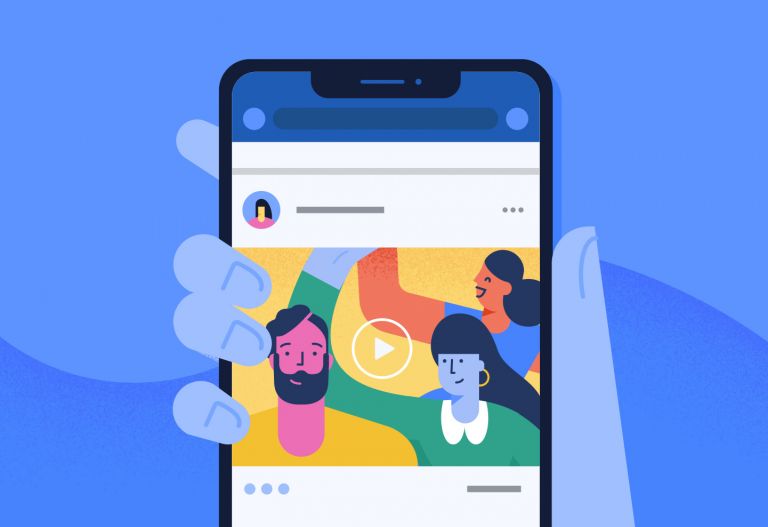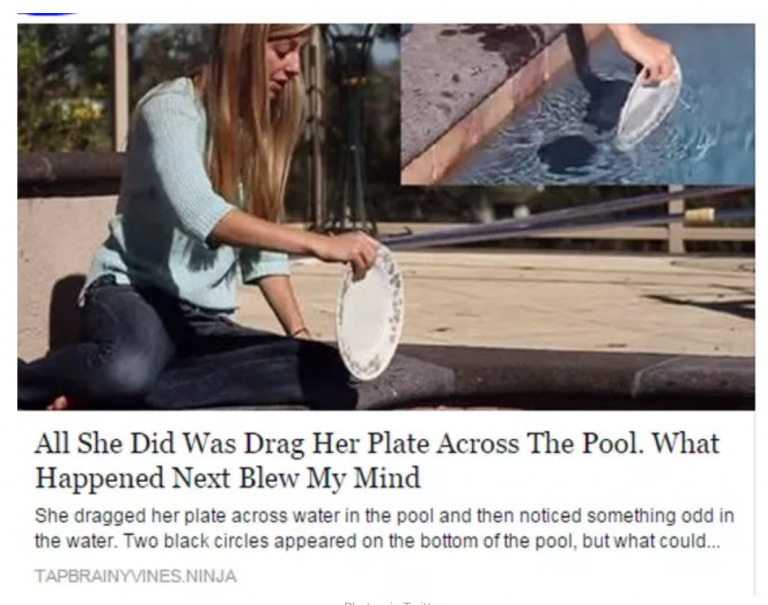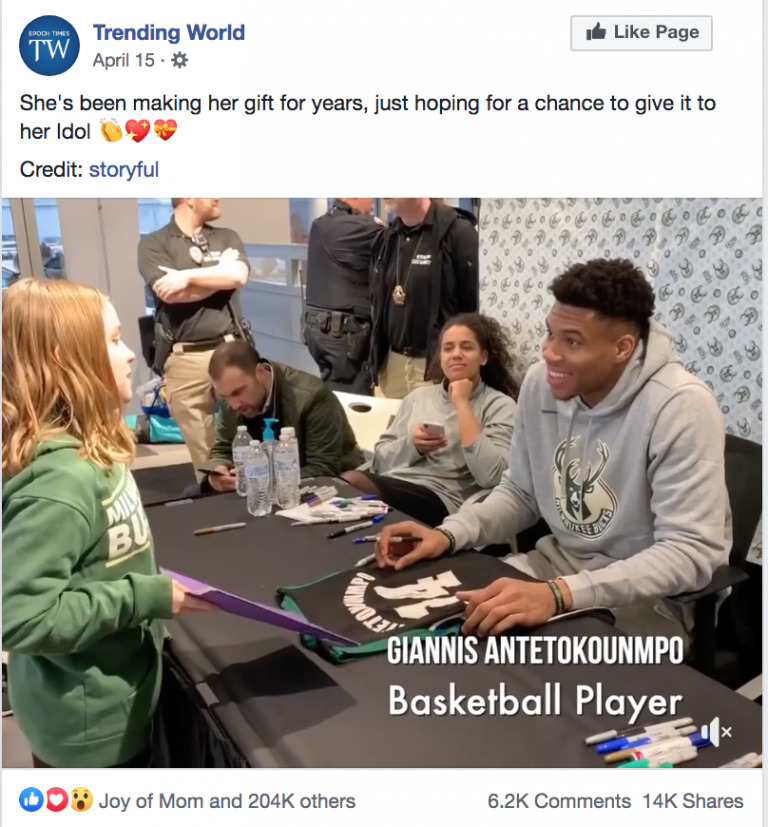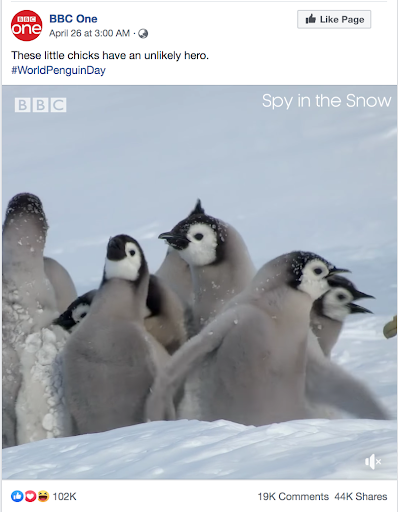Facebook recently announced a change to the video distribution algorithm that has content creators shaking in their boots. When you live and die on the stormy seas of social media marketing, your fortunes can change dramatically with algorithm updates and this one looks like a doozy.
If you’re a content pirate who primarily shares and redistributes video content, read on to find out how to weather the storm (or check out Biteable’s easy video templates and start making your own video content).
If you’re a content creator, you’re in luck — your ship is about to come in. But enough with the sea idioms, let’s talk video.
Today, we’ll run through the new algorithm changes, the broader implications for social sharing, and what it means for video marketers.
What are the changes to the algorithm?
Another day, another algorithm coming in and disrupting everyone’s business. Facebook’s new video distribution algorithm, which was announced on the 6th of May, is built around three key factors. It’s important to note that these factors have always been taken into account but their relative weightings have changed. The most prominent new factors include:
Loyalty and intent: Similar to apps who value returning daily users, the new algorithm gives more weight to ‘loyal’ user behaviour. Users who frequently tune in, seek out content by specific creators, or engage with a specific channel, show they’re invested in the video content that’s being produced.
Video and viewing duration: Facebook will prioritise video content that captures user attention for at least one minute (and even more points awarded when the video is at least three minutes long). This shows users are sticking around long after the average attention span demands.
- Originality: And finally, the most important change, they will limit distribution and monetization for unoriginal or repurposed content.
Facebook stated their motivations behind the update were:
“…to help talented video creators find their audience and build profitable video businesses on Facebook. We want to help media companies — whether large, small, global, or local — continue their invaluable work. And above all, we want to help people on Facebook discover great videos and build relationships with the creators and publishers that matter to them.”

This seems very sweet and egalitarian from the company who profiteer from selling their users’ data but whatever. We believe them. The underlying message here is that Facebook wants content creators to receive their dues and discourage pages that steal, borrow, or repost unattributed video content.
Essentially, they’re prioritizing authentic engagement, which means stats like time spent watching will be worth less than the number of comments and the number of replies to comments. This is an attempt to reduce engagement-bait — posts that ask users to like or comment on them.
Clickbait is also being more stringently monitored, which, sadly, means less of this (incredible) nonsense:

Generally, Facebook wants higher quality, more relevance, more local content to be championed on your news feed.
What’s the real reason for the update? A history of algorithm updates.
The new video algorithm hasn’t come out of nowhere and, although it will mostly negatively affect content creeps who pinch cat videos, it’s not a politically neutral decision. Consider this (truncated) summary of the political evolution of the algorithm. Presently, we live in an age of digital anarchy. The internet is:
- Pushing 40 (according to Google, its birthday is January 1, 1983)
- An integral component in nearly every profession
- Used by 81% of the developed world and 56.1% of the world at large
- Still largely operating outside of the realistically enforceable arm of the law.
The legal system, in most countries, is slow, unwieldy, and has not caught up to the nimble, prancing, constantly-evolving internet. It’s slowly pivoting and adjusting existing laws to cover digital spaces and creating wholly new laws to try and govern this nebulous, pervasive system that we all depend on. It’s slowly closing the gap. But boy is it a slog.
We’re operating in an unprecedented era wherein national governments can’t effectively administrate and uphold online laws and it creates a situation where digital behemoths, like Facebook, have more responsibility than ever to create fair and equitable systems that, effectively, act as law. In this case, Facebook are trying to regulate content theft and enforce copyright. It’s not as simple as saying to people ‘Don’t pinch content from other people on the internet and harvest traffic, views, followers from it!’. Enforcing this edict would be near impossible considering the global scale of content snatching.
So Facebook has to actively limit the fruits of thievery with a clever video algorithm change. Under the new algorithm, repurposed video content, repeated content, and reported content won’t garner the same popularity or enjoy the same reach. Reach that was previously dependent on engagement statistics to gauge relevance will now be undermined if it’s build on stolen content.
What might seem like a minor annoyance for video content amalgamators, or a slight boon for Facebook users, is actually a pretty big political move for Facebook to value the needs of the content-generating user base over the needs of advertisers who spend big money to promote (sometimes) stolen content.
But it’s not unprecedented. The roots of this priority shift come from Google. Since early 2015, the search engine has been significantly updating their SERP algorithm to preference quality content. The Phantom Update of 2015 (fan-named because Google barely acknowledged it) disrupted a lot of rankings. They began to assess content based on quality indicators – time spent on page, pages per session, engagement. Basically, user-led priorities.
Prioritising the needs of your user base might seem obvious, but it’s taken a while to get here. Facebook have made similar changes over the years too. The most notable in 2018 was the shift to preferencing content from friends and personal connections over business pages. Zuckerberg said “Recently we’ve gotten feedback from our community that public content — posts from businesses, brands and media — is crowding out the personal moments that lead us to connect more with each other.”
This update aimed to reduce the instances of:
- Low quality content
- Thin content
- Affiliate content
- Clickbait article
- Too many ads
- Pop-ups
- Stacked videos
- Pages difficult to navigate
Sound familiar? Facebook has slowly been moving back towards serving the needs of its users and acknowledging the massive role video will play in the future of content. The video algorithm update is further evidence of a push to meet the needs of the little guy – independent content creators who serve niche content – over the businesses with money to burn or companies who steal content.
That said, it’s not all good news. Facebook acting as a regulator is good but it also gives them total power. Does the new algorithm apply uniformly? Or are there pockets of Facebook that are afforded indemnity? For example, users have noticed that Buzzfeed has survived previous algorithm changes remarkably well despite most of their popular content featuring “borrowed” (and sometimes unattributed) tweets, memes, and images. Unlike their competitor Upworthy whose reach was halved in 2013-2014. The ability selectively apply restrictions makes Facebook less of a neutral governing body and more of a benevolent dictator.
So – who should be worried?
Who will be affected?
For most users, the algorithm change will herald more authentic content delivered from the original source into their news feeds, which is a great addition and it means that interactions and eyeball time you contribute will go towards helping the original creators monetize their efforts.
For businesses, it’s mostly good news if you make your own video content. To reward your contributions, you’re likely to receive a bit of an organic boost. It’s very bad news for business who engage in share schemes – sharing popular content around between endorsed partners – because Facebook is onto you.
It’s also bad news for businesses who piggyback on viral content trends. Many social platforms and search algorithms are moving away from clickbaity, low-value content and towards original, authentic content that generates authentic engagement. And what the heck is authentic engagement, you ask?
Not all engagement is created equally. Interactions that can be automated – likes, follows, and generic comments – are further down the pecking order of value. Interactions that are genuine – comments that garner many replies or likes, views, and private shares – are more valuable under the 2018 Facebook algorithm change because it shows real people are behind the clicks.
But regardless of the source of your video content, all businesses sharing content should start to ask themselves: what do my followers want to see? How can I serve them? Increasingly, search engines and social platforms are moving in the direction of serving the needs of the market rather than trying to push unwanted content on users.
TL; DR?
A series of Facebook algorithm changes, including the recent update regarding video distribution, indicates a value shift towards prioritising original video content that’s backed by authentic engagement. Loyalty of followers and viewing duration will also become more important to gaining traction. Shared or repurposed content is not cool anymore, in any sense, and Facebook will actively try to interrupt the monetization of duplicate content so pivot away from borrowed content and think seriously about creating original content.
Bad: Pages designed to share content

Good: Large-scale content creators

Better: Individuals sharing and commenting on local content

